758
10 recent space discoveries no one can explain
Forty nine million seven hundred eighty nine thousand one hundred eighty six
The universe loves to surprise and confuse us. Sometimes, the discoveries that benefit science, together with that bring us the cloud of mysteries and forced to fight each other in trying to explain these puzzles.
The enigmatic magnetic field of the moon
The moon was magnetically inert (did not possess an intrinsic magnetic field) for millennia, however, one recent study confirmed that it was not always so. About four billion years ago the inner molten core of the moon has started to rotate against the movement of the mantle of the moon, like our earth's Dynamo and Earth's natural satellite has got a powerful magnetic shield. Of course, it had to be a much weaker version of earth shield due to the lack of mass.
But, to scientists ' surprise, our little Luna was able to generate much more powerful magnetic field than our home planet. No one knows why such a frail body showed a powerful magnetic activity, and all the explanations boil down to either "we don't know" or "magic". This mystery shows that one of the most extensively studied partners of the Earth in the Solar system there is a set of unknown variables. It seems that the Moon used some kind of exotic method to produce incredible magnetic field. And it lasted quite long, maybe due to the constant bombardment of meteorites, which fueled the magnetism of the moon.
The magnetic field disappeared about 3.8 – 4 billion years ago, but research on the topic of why it happened have yet to deploy. Most interesting is that the moon's core is still a bit watery. Thus, despite the fact that the Earth satellite is, you might say, at arm's length, we still have a lot to not know about it.
Galaxy age of 13 billion years
The young universe was a living hell — shaken and opaque mousse electrons and protons. It took almost half a billion years before the child has cooled down enough to allow to form the neutrons. And after that turned the landscape, where there are stars and galaxies.
Recent ultra-deep study of Subaru telescope located in Hawaii and supported by the National astronomical Observatory of Japan, has revealed seven of the youngest galaxies in the Universe at all. At a distance of 13 billion light years, they appear as a barely visible drop of light. In fact, they were visible only after Subaru focused on a tiny area of sky and watched it for 100 hours.
Born within 700 million years after the Big Bang, these galaxies are among the earliest things in the Universe we could ever observe. These types of galaxies are characterized by intense excitation of hydrogen and heavy elements (except small gatherings lithium) as they have not formed during the supernova explosions.
These galaxies emitters Lyman alpha (LAE) — appeared suddenly and for reasons not fully understood. LAE galaxies are prolific producers of stars, and their advanced age gives an idea about the evolution of the Universe. But astronomers are not sure whether these were captured by the Subaru galaxy newly formed or existed before, obstruct the cosmic gas.
The magic island, Titan
The largest moon of Saturn, Titan, may be the most intriguing member of the Solar system. In fact, this primitive Earth, with its atmosphere, liquid bodies, and even geological activity.
In 2013, orbital spacecraft "Cassini" found a totally new piece of land, which appeared from the second largest sea of Titan, Ligeria Mare. Soon after, the "magic way" as mysteriously disappeared in the translucent methane atanova sea temperature of -200 degrees Celsius. Then he appeared again, with a much greater mass of the earth, during the next radar scan of Titan.
Ephemeral earth confirms the assumption that the alien oceans and seas of Titan are dynamic components of the active environment, not static features. However, astronomers are at a loss to explain the physical processes behind the ephemeral land. In addition, it has increased in size from 50 to 100 kilometers in diameter since the first appearance.
Asteroid with rings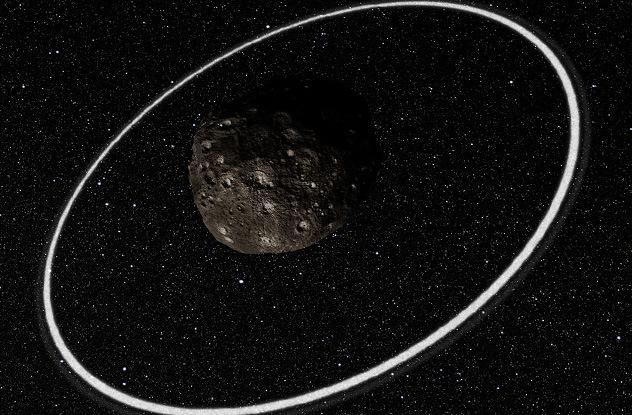
All of our gas giants is surrounded by rings, though most of these rings represent thin bundles of garbage compared to the massive set of Saturn's rings. For the first time and quite unexpectedly, astronomers have discovered rings around the body are much smaller than a gas giant. Asteroid Chariklo, only 250 kilometers in diameter, can boast of a system of rings.
Chariklo, despite its rather impressive size, looks like an unremarkable piece of stone. But astronomers noticed that he has anomalous light signature. When it eclipsed a distant star, an unexpected amount of light reached our telescopes. It turned out that Chariklo has two cosmic necklaces. They contain a lot of frozen water, the largest of the rings in width, is 7 miles, and the least — in half.
And while some asteroids even have "moons" — tiny satellites next — Chariklo unique, because of the rings around asteroid was never observed. The origin of the rings is still unclear, although it is believed that they formed upon impact. Either it remains a foreign body that destroyed itself Chariklo or part of Chariklo that remained after the crash.
The underproduction of UV
We are proud to find different types of balance in space. One of these balances is a correlation between ultraviolet light and hydrogen, both these parts coexist in well-defined proportions.
A recent study, however, showed significant underproduction of UV photons from known sources — a 400 percent difference in comparison with the predicted values. Lead author juna Kollmeier compares the finding with the fact that you come into the blindingly bright room, but find only a few dim bulbs who can't give as much light.
There are two well-known process, producing ultraviolet radiation — naughty young stars and massive black holes — but in fact this radiation are more than welcome to make these two source. Astronomers can't explain the overproduction of UV rays and are forced to admit that "at least one thing we thought we know about the modern universe, is not working." It's sad when you consider that we were "well understood," the balance of UV and hydrogen. As in many other cases in the past, astronomers had to go back to the calculations.
It is very interesting that this underproduction of UV light is shown only on local distances. Peering further into space and time, astronomers find that their predictions hold up quite well. Maybe missing radiation may be the result of exotic and as-yet-undiscovered processes. Including the decay of dark matter.
Weird x-rays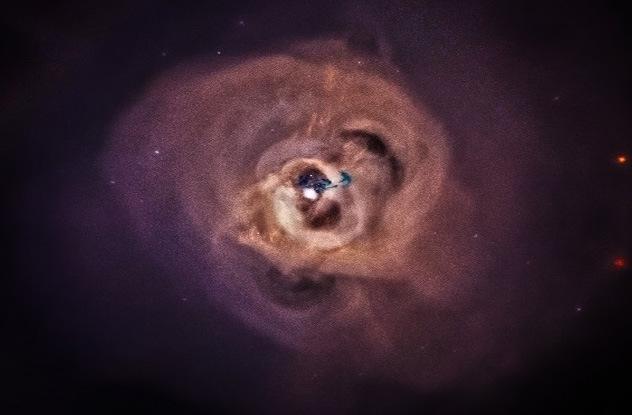
Strange x-ray pulses flow from the nuclei of galaxies of Andromeda and Perseus. And the spectrum of the signals (light signature) does not match any known particles or atoms. So astronomers previously drooling over the upcoming scientific breakthrough, since this phenomenon may be first evidence of dark matter.
Dark matter — the elusive and invisible matter component of most of the mass of the Universe may consist of sterile neutrons, which may or may not exist depending on the different points of view. Supposedly these particles produce x-rays in its death throes, and these emissions can explain the bursts from the aforementioned centres of galaxies.
In addition, since the radiation comes from the nuclei of galaxies, it corresponds to areas with a high concentration of clusters of dark matter. Perhaps we are on the threshold of important discoveries.
Sistivity asteroid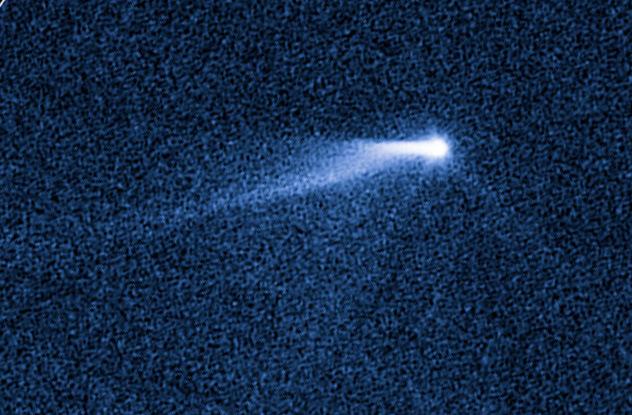
Hubble showed an interesting asteroid that thinks he's a comet. If the comet is easily recognizable by the bright tail plumage, asteroids usually there are no such features are: they have little ice and they consist mainly of heavy elements and stone. Therefore, the discovery of an asteroid with six tails is an incredible surprise.
Asteroid P/2013 P5 is a unique, he has six spouting jets. He throws the material into space as a cosmic lawn sprinkler.
It is unclear why the object behaves and looks like. It is believed that P5 is rotating so fast that accidentally kills himself. Its tiny gravity does not correspond to rotation speed, so fast rotation is tearing him apart. Pressure solar radiation disperses these fragments to create the most beautiful tails similar to the tails of the comet.
However, astronomers do know that P5 is the remnants of a previous collision. The tails most likely contain no ice at all, because hardly frozen water found in the object, which exploded at a temperature of 800 degrees Celsius.
Distant monster HD 106906b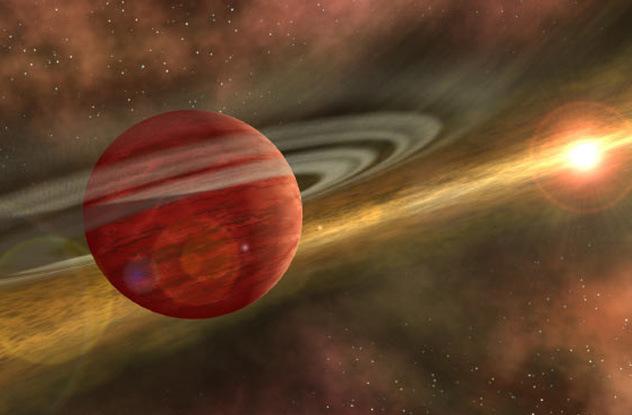
Planet HD 106906b raises many questions. This monster is 11 times more massive than Jupiter, and its orbit giant calls into question all our knowledge about the formation of planets. Distance from HD to the parent star is 650. E. (1. E. the distance from the Earth to the Sun).
Even Neptune, the most distant of the closest planets, orbits the Sun at a distance of 30. E. It's pretty far away, but HD has been removed from its star a lot more. Astronomers are trying to find an explanation for the existence of the HD for all its weight and long orbit.
The forces responsible for the creation of planets, don't work for such huge distances, so there is the possibility that the HD was created during collapse of the ring of debris. But HD is too massive for that. And drives the primary raw material, from which come the planet simply can't afford as much "meat" to create such a monster.
Storms on Uranus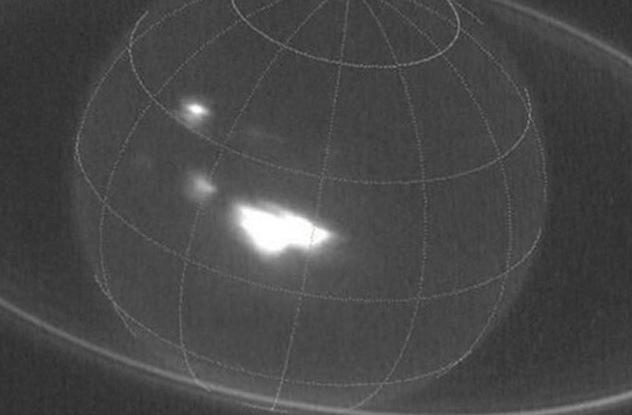
Uranus took astronomers by surprise. The second-farthest member of our solar family, as a rule, keep peace, but for some reason, currently, the planet is rich in storms.
Elegant storms on Uranus expected in 2007, when the planet has completed half of his 82-year-old orbit and has entered a period of equinox. However, stormy weather had gradually come to naught, while Uranus continues its journey around the Sun. But this did not happen.
In the absence of inner heat source, the green giant relies on solar emissions that fuel its storms. But astronomers from the University of California at Berkeley recently noticed a powerful activity in the top region of the planet, covered with a layer of frozen methane. Some of these storms were in size to the Earth and shone so bright that even Amateur astronomers were able to detect glare on the planet.
It is unclear how storms remain healthy without the support of the Sun. The Northern hemisphere was plunged into the shadows, but continues to demonstrate the powerful storm activity. It is possible that the vortices deep in the planet's atmosphere are caused by processes similar to those observed in the more turbulent Jupiter.
KIC 2856960, a system of three stars
Space Observatory Kepler, as a rule, occupied by the hunt for new planets, but spent the four years of its life tracking three gravitationally connected stars KIC 2856960. KIC is a mill of three stars, around two dwarf stars rotates a third celestial body. Nothing special, just three stars.
Kepler observed the four daily dimming in the light curve when the binary dwarfs crossed every six hours. He also saw another slight dimming every 204 days, which caused the third star. You would think that four years of observations sufficient to meet KIC. Astronomers thought so too. But after all the calculations, the data has lost its meaning in the context of the behavior of the observed stars. They were not even able to calculate mass of stars, although it's quite simple.
To date, stellar trio of astronomers brought to a standstill. There is one possible answer that fits the numbers, but illogical. Besides, it's almost unbelievable. The system KIC can hide the fourth star. However, its orbit should ideally mimic the orbit of the third star, creating the illusion of a single object.
Materials listverse.com
Source: hi-news.ru
The universe loves to surprise and confuse us. Sometimes, the discoveries that benefit science, together with that bring us the cloud of mysteries and forced to fight each other in trying to explain these puzzles.
The enigmatic magnetic field of the moon

The moon was magnetically inert (did not possess an intrinsic magnetic field) for millennia, however, one recent study confirmed that it was not always so. About four billion years ago the inner molten core of the moon has started to rotate against the movement of the mantle of the moon, like our earth's Dynamo and Earth's natural satellite has got a powerful magnetic shield. Of course, it had to be a much weaker version of earth shield due to the lack of mass.
But, to scientists ' surprise, our little Luna was able to generate much more powerful magnetic field than our home planet. No one knows why such a frail body showed a powerful magnetic activity, and all the explanations boil down to either "we don't know" or "magic". This mystery shows that one of the most extensively studied partners of the Earth in the Solar system there is a set of unknown variables. It seems that the Moon used some kind of exotic method to produce incredible magnetic field. And it lasted quite long, maybe due to the constant bombardment of meteorites, which fueled the magnetism of the moon.
The magnetic field disappeared about 3.8 – 4 billion years ago, but research on the topic of why it happened have yet to deploy. Most interesting is that the moon's core is still a bit watery. Thus, despite the fact that the Earth satellite is, you might say, at arm's length, we still have a lot to not know about it.
Galaxy age of 13 billion years

The young universe was a living hell — shaken and opaque mousse electrons and protons. It took almost half a billion years before the child has cooled down enough to allow to form the neutrons. And after that turned the landscape, where there are stars and galaxies.
Recent ultra-deep study of Subaru telescope located in Hawaii and supported by the National astronomical Observatory of Japan, has revealed seven of the youngest galaxies in the Universe at all. At a distance of 13 billion light years, they appear as a barely visible drop of light. In fact, they were visible only after Subaru focused on a tiny area of sky and watched it for 100 hours.
Born within 700 million years after the Big Bang, these galaxies are among the earliest things in the Universe we could ever observe. These types of galaxies are characterized by intense excitation of hydrogen and heavy elements (except small gatherings lithium) as they have not formed during the supernova explosions.
These galaxies emitters Lyman alpha (LAE) — appeared suddenly and for reasons not fully understood. LAE galaxies are prolific producers of stars, and their advanced age gives an idea about the evolution of the Universe. But astronomers are not sure whether these were captured by the Subaru galaxy newly formed or existed before, obstruct the cosmic gas.
The magic island, Titan

The largest moon of Saturn, Titan, may be the most intriguing member of the Solar system. In fact, this primitive Earth, with its atmosphere, liquid bodies, and even geological activity.
In 2013, orbital spacecraft "Cassini" found a totally new piece of land, which appeared from the second largest sea of Titan, Ligeria Mare. Soon after, the "magic way" as mysteriously disappeared in the translucent methane atanova sea temperature of -200 degrees Celsius. Then he appeared again, with a much greater mass of the earth, during the next radar scan of Titan.
Ephemeral earth confirms the assumption that the alien oceans and seas of Titan are dynamic components of the active environment, not static features. However, astronomers are at a loss to explain the physical processes behind the ephemeral land. In addition, it has increased in size from 50 to 100 kilometers in diameter since the first appearance.
Asteroid with rings

All of our gas giants is surrounded by rings, though most of these rings represent thin bundles of garbage compared to the massive set of Saturn's rings. For the first time and quite unexpectedly, astronomers have discovered rings around the body are much smaller than a gas giant. Asteroid Chariklo, only 250 kilometers in diameter, can boast of a system of rings.
Chariklo, despite its rather impressive size, looks like an unremarkable piece of stone. But astronomers noticed that he has anomalous light signature. When it eclipsed a distant star, an unexpected amount of light reached our telescopes. It turned out that Chariklo has two cosmic necklaces. They contain a lot of frozen water, the largest of the rings in width, is 7 miles, and the least — in half.
And while some asteroids even have "moons" — tiny satellites next — Chariklo unique, because of the rings around asteroid was never observed. The origin of the rings is still unclear, although it is believed that they formed upon impact. Either it remains a foreign body that destroyed itself Chariklo or part of Chariklo that remained after the crash.
The underproduction of UV

We are proud to find different types of balance in space. One of these balances is a correlation between ultraviolet light and hydrogen, both these parts coexist in well-defined proportions.
A recent study, however, showed significant underproduction of UV photons from known sources — a 400 percent difference in comparison with the predicted values. Lead author juna Kollmeier compares the finding with the fact that you come into the blindingly bright room, but find only a few dim bulbs who can't give as much light.
There are two well-known process, producing ultraviolet radiation — naughty young stars and massive black holes — but in fact this radiation are more than welcome to make these two source. Astronomers can't explain the overproduction of UV rays and are forced to admit that "at least one thing we thought we know about the modern universe, is not working." It's sad when you consider that we were "well understood," the balance of UV and hydrogen. As in many other cases in the past, astronomers had to go back to the calculations.
It is very interesting that this underproduction of UV light is shown only on local distances. Peering further into space and time, astronomers find that their predictions hold up quite well. Maybe missing radiation may be the result of exotic and as-yet-undiscovered processes. Including the decay of dark matter.
Weird x-rays

Strange x-ray pulses flow from the nuclei of galaxies of Andromeda and Perseus. And the spectrum of the signals (light signature) does not match any known particles or atoms. So astronomers previously drooling over the upcoming scientific breakthrough, since this phenomenon may be first evidence of dark matter.
Dark matter — the elusive and invisible matter component of most of the mass of the Universe may consist of sterile neutrons, which may or may not exist depending on the different points of view. Supposedly these particles produce x-rays in its death throes, and these emissions can explain the bursts from the aforementioned centres of galaxies.
In addition, since the radiation comes from the nuclei of galaxies, it corresponds to areas with a high concentration of clusters of dark matter. Perhaps we are on the threshold of important discoveries.
Sistivity asteroid

Hubble showed an interesting asteroid that thinks he's a comet. If the comet is easily recognizable by the bright tail plumage, asteroids usually there are no such features are: they have little ice and they consist mainly of heavy elements and stone. Therefore, the discovery of an asteroid with six tails is an incredible surprise.
Asteroid P/2013 P5 is a unique, he has six spouting jets. He throws the material into space as a cosmic lawn sprinkler.
It is unclear why the object behaves and looks like. It is believed that P5 is rotating so fast that accidentally kills himself. Its tiny gravity does not correspond to rotation speed, so fast rotation is tearing him apart. Pressure solar radiation disperses these fragments to create the most beautiful tails similar to the tails of the comet.
However, astronomers do know that P5 is the remnants of a previous collision. The tails most likely contain no ice at all, because hardly frozen water found in the object, which exploded at a temperature of 800 degrees Celsius.
Distant monster HD 106906b

Planet HD 106906b raises many questions. This monster is 11 times more massive than Jupiter, and its orbit giant calls into question all our knowledge about the formation of planets. Distance from HD to the parent star is 650. E. (1. E. the distance from the Earth to the Sun).
Even Neptune, the most distant of the closest planets, orbits the Sun at a distance of 30. E. It's pretty far away, but HD has been removed from its star a lot more. Astronomers are trying to find an explanation for the existence of the HD for all its weight and long orbit.
The forces responsible for the creation of planets, don't work for such huge distances, so there is the possibility that the HD was created during collapse of the ring of debris. But HD is too massive for that. And drives the primary raw material, from which come the planet simply can't afford as much "meat" to create such a monster.
Storms on Uranus

Uranus took astronomers by surprise. The second-farthest member of our solar family, as a rule, keep peace, but for some reason, currently, the planet is rich in storms.
Elegant storms on Uranus expected in 2007, when the planet has completed half of his 82-year-old orbit and has entered a period of equinox. However, stormy weather had gradually come to naught, while Uranus continues its journey around the Sun. But this did not happen.
In the absence of inner heat source, the green giant relies on solar emissions that fuel its storms. But astronomers from the University of California at Berkeley recently noticed a powerful activity in the top region of the planet, covered with a layer of frozen methane. Some of these storms were in size to the Earth and shone so bright that even Amateur astronomers were able to detect glare on the planet.
It is unclear how storms remain healthy without the support of the Sun. The Northern hemisphere was plunged into the shadows, but continues to demonstrate the powerful storm activity. It is possible that the vortices deep in the planet's atmosphere are caused by processes similar to those observed in the more turbulent Jupiter.
KIC 2856960, a system of three stars

Space Observatory Kepler, as a rule, occupied by the hunt for new planets, but spent the four years of its life tracking three gravitationally connected stars KIC 2856960. KIC is a mill of three stars, around two dwarf stars rotates a third celestial body. Nothing special, just three stars.
Kepler observed the four daily dimming in the light curve when the binary dwarfs crossed every six hours. He also saw another slight dimming every 204 days, which caused the third star. You would think that four years of observations sufficient to meet KIC. Astronomers thought so too. But after all the calculations, the data has lost its meaning in the context of the behavior of the observed stars. They were not even able to calculate mass of stars, although it's quite simple.
To date, stellar trio of astronomers brought to a standstill. There is one possible answer that fits the numbers, but illogical. Besides, it's almost unbelievable. The system KIC can hide the fourth star. However, its orbit should ideally mimic the orbit of the third star, creating the illusion of a single object.
Materials listverse.com
Source: hi-news.ru
























